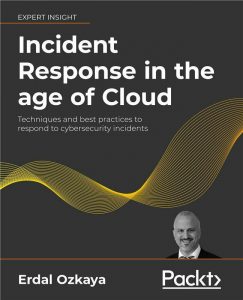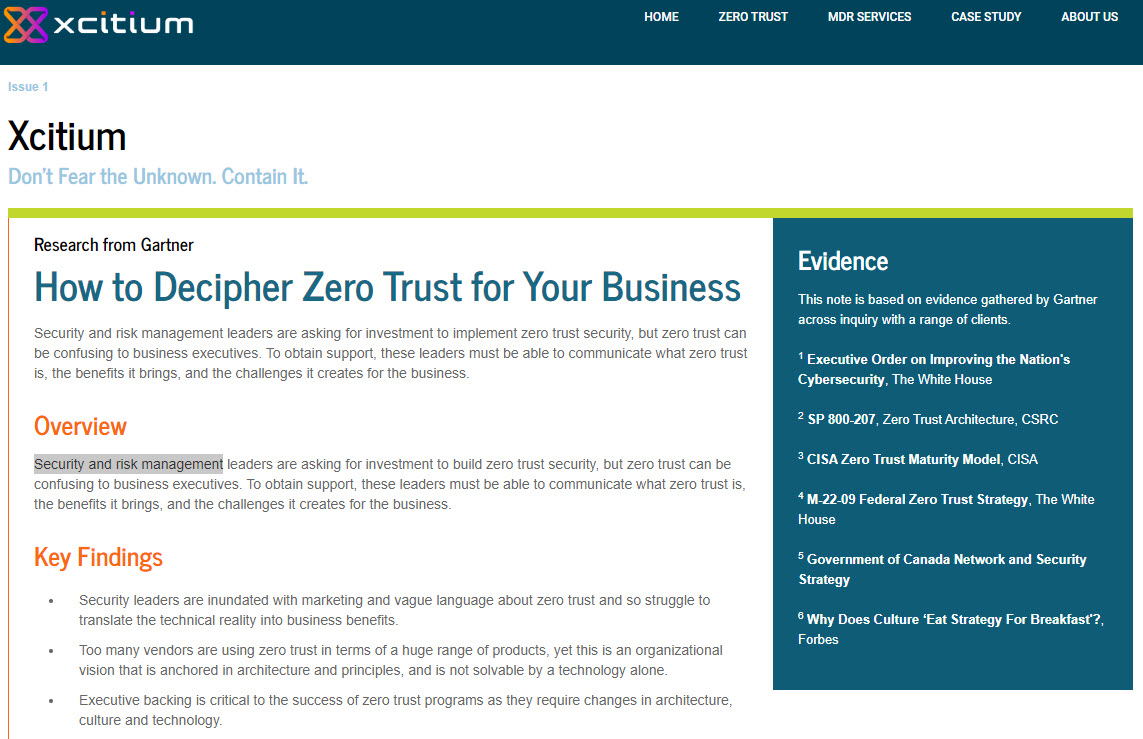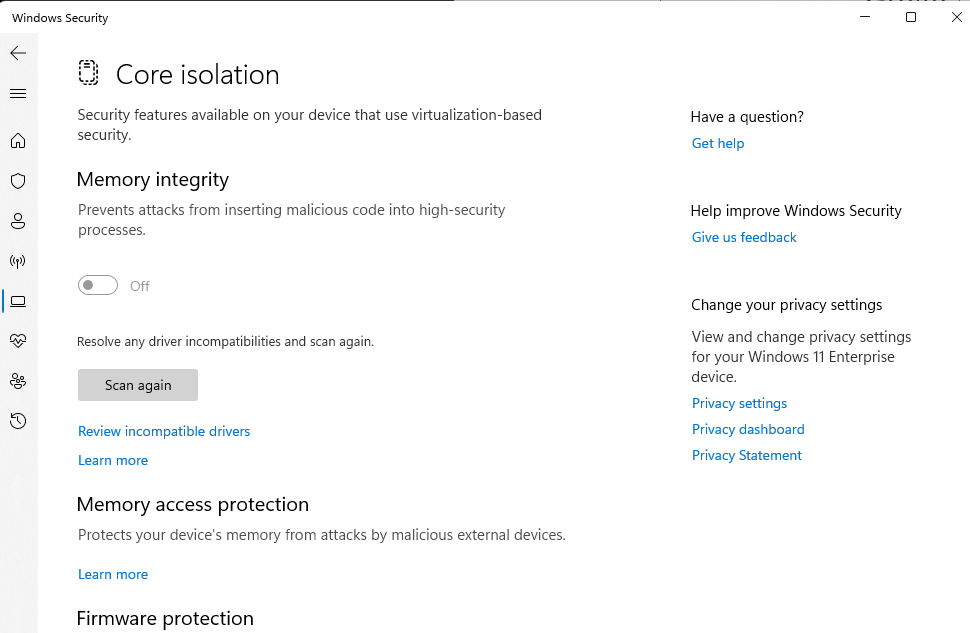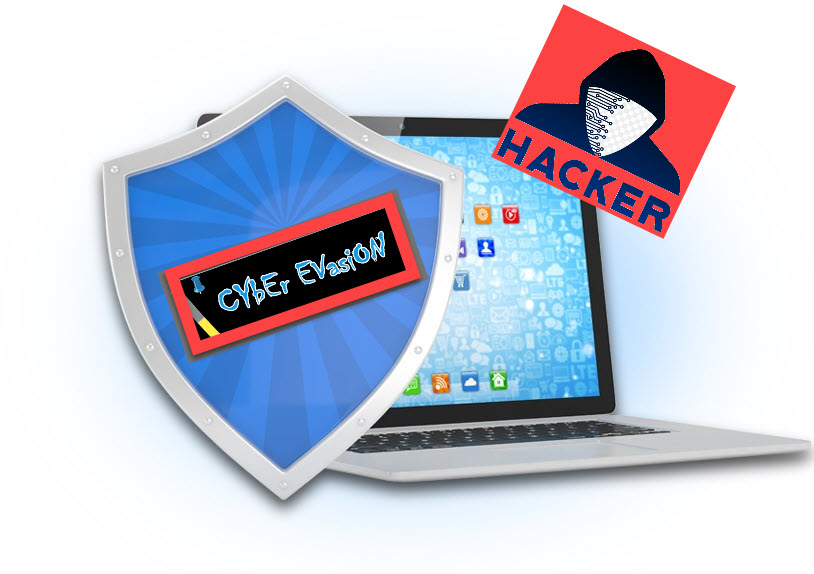Evading industry leading endpoint protection in 2022
This post will cover a Blueprint for evading EDR’s , a post written by Van Mieghem on his blog. All credit is going to him, and I wanted You to be aware of this awesome post .
A blueprint for evading industry leading endpoint protection in 2022
About two years ago I quit being a full-time red team operator. However, it still is a field of expertise that stays very close to my heart. A few weeks ago, I was looking for a new side project and decided to pick up an old red teaming hobby of mine: bypassing/evading endpoint protection solutions.
In this post, I’d like to lay out a collection of techniques that together can be used to bypassed industry leading enterprise endpoint protection solutions. This is purely for educational purposes for (ethical) red teamers and alike, so I’ve decided not to publicly release the source code.
The aim for this post is to be accessible to a wide audience in the security industry, but not to drill down to the nitty gritty details of every technique. Instead, I will refer to writeups of others that deep dive better than I can.
In adversary simulations, a key challenge in the “initial access” phase is bypassing the detection and response capabilities (EDR) on enterprise endpoints. Commercial command and control frameworks provide unmodifiable shellcode and binaries to the red team operator that are heavily signatured by the endpoint protection industry and in order to execute that implant, the signatures (both static and behavioural) of that shellcode need to be obfuscated.
In this post, I will cover the following techniques, with the ultimate goal of executing malicious shellcode, also known as a (shellcode) loader:
1. Shellcode encryption
Let’s start with a basic but important topic, static shellcode obfuscation. In my loader, I leverage a XOR or RC4 encryption algorithm, because it is easy to implement and doesn’t leave a lot of external indicators of encryption activities performed by the loader.
AES encryption to obfuscate static signatures of the shellcode leaves traces in the import address table of the binary, which increase suspicion. I’ve had Windows Defender specifically trigger on AES decryption functions (e.g. CryptDecrypt, CryptHashData, CryptDeriveKey etc.) in earlier versions of this loader.
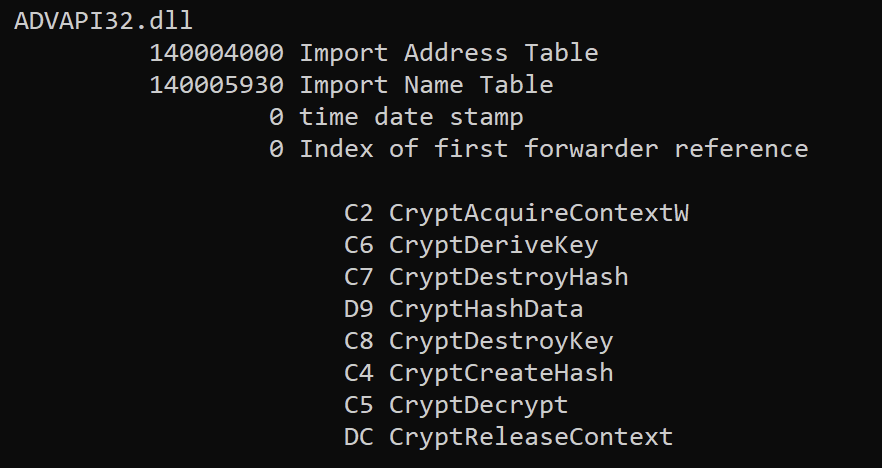
Output of dumpbin /imports, an easy giveaway of only AES decryption functions being used in the binary.
2. Reducing entropy
Many AV/EDR solutions consider binary entropy in their assessment of an unknown binary. Since we’re encrypting the shellcode, the entropy of our binary is rather high, which is a clear indicator of obfuscated parts of code in the binary.
There are several ways of reducing the entropy of our binary, two simple ones that work are:
- Adding low entropy resources to the binary, such as (low entropy) images.
- Adding strings, such as the English dictionary or some of
"strings C:\Program Files\Google\Chrome\Application\100.0.4896.88\chrome.dll" output.
A more elegant solution would be to design and implement an algorithm that would obfuscate (encode/encrypt) the shellcode into English words (low entropy). That would kill two birds with one stone.
3. Escaping the (local) AV sandbox
Many EDR solutions will run the binary in a local sandbox for a few seconds to inspect its behaviour. To avoid compromising on the end user experience, they cannot afford to inspect the binary for longer than a few seconds (I’ve seen Avast taking up to 30 seconds in the past, but that was an exception).
We can abuse this limitation by delaying the execution of our shellcode. Simply calculating a large prime number is my personal favourite. You can go a bit further and deterministically calculate a prime number and use that number as (a part of) the key to your encrypted shellcode.
4. Import table obfuscation
You want to avoid suspicious Windows API (WINAPI) from ending up in our IAT (import address table). This table consists of an overview of all the Windows APIs that your binary imports from other system libraries. A list of suspicious (oftentimes therefore inspected by EDR solutions) APIs can be found here.
Typically, these are VirtualAlloc, VirtualProtect, WriteProcessMemory, CreateRemoteThread, SetThreadContext etc. Running dumpbin /exports <binary.exe> will list all the imports. For the most part, we’ll use Direct System calls to bypass both EDR hooks (refer to section 7) of suspicious WINAPI calls, but for less suspicious API calls this method works just fine.
We add the function signature of the WINAPI call, get the address of the WINAPI in ntdll.dll and then create a function pointer to that address:
typedef BOOL (WINAPI * pVirtualProtect)(LPVOID lpAddress, SIZE_T dwSize, DWORD flNewProtect, PDWORD lpflOldProtect);
pVirtualProtect fnVirtualProtect;
unsigned char sVirtualProtect[] = { 'V','i','r','t','u','a','l','P','r','o','t','e','c','t', 0x0 };
unsigned char sKernel32[] = { 'k','e','r','n','e','l','3','2','.','d','l','l', 0x0 };
fnVirtualProtect = (pVirtualProtect) GetProcAddress(GetModuleHandle((LPCSTR) sKernel32), (LPCSTR)sVirtualProtect);
// call VirtualProtect
fnVirtualProtect(address, dwSize, PAGE_READWRITE, &oldProt);
Obfuscating strings using a character array cuts the string up in smaller pieces making them more difficult to extract from a binary.
The call will still be to an ntdll.dll WINAPI, and will not bypass any hooks in WINAPIs in ntdll.dll, but is purely to remove suspicious functions from the IAT.
5. Disabling Event Tracing for Windows (ETW)
Many EDR solutions leverage Event Tracing for Windows (ETW) extensively, in particular Microsoft Defender for Endpoint (formerly known as Microsoft ATP). ETW allows for extensive instrumentation and tracing of a process’ functionality and WINAPI calls.
ETW has components in the kernel, mainly to register callbacks for system calls and other kernel operations, but also consists of a userland component that is part of ntdll.dll (ETW deep dive and attack vectors). Since ntdll.dll is a DLL loaded into the process of our binary, we have full control over this DLL and therefore the ETW functionality. There are quite a few different bypasses for ETW in userspace, but the most common one is patching the function EtwEventWrite which is called to write/log ETW events. We fetch its address in ntdll.dll, and replace its first instructions with instructions to return 0 (SUCCESS).
void disableETW(void) {
// return 0
unsigned char patch[] = { 0x48, 0x33, 0xc0, 0xc3}; // xor rax, rax; ret
ULONG oldprotect = 0;
size_t size = sizeof(patch);
HANDLE hCurrentProc = GetCurrentProcess();
unsigned char sEtwEventWrite[] = { 'E','t','w','E','v','e','n','t','W','r','i','t','e', 0x0 };
void *pEventWrite = GetProcAddress(GetModuleHandle((LPCSTR) sNtdll), (LPCSTR) sEtwEventWrite);
NtProtectVirtualMemory(hCurrentProc, &pEventWrite, (PSIZE_T) &size, PAGE_READWRITE, &oldprotect);
memcpy(pEventWrite, patch, size / sizeof(patch[0]));
NtProtectVirtualMemory(hCurrentProc, &pEventWrite, (PSIZE_T) &size, oldprotect, &oldprotect);
FlushInstructionCache(hCurrentProc, pEventWrite, size);
}
I’ve found the above method to still work on the two tested EDRs, but this is a noisy ETW patch.
6. Evading common malicious API call patterns
Most behavioural detection is ultimately based on detecting malicious patterns. One of these patters is the order of specific WINAPI calls in a short timeframe. The suspicious WINAPI calls briefly mentioned in section 4 are typically used to execute shellcode and therefore heavily monitored.
However, these calls are also used for benign activity (the VirtualAlloc, WriteProcess, CreateThread pattern in combination with a memory allocation and write of ~250KB of shellcode) and so the challenge for EDR solutions is to distinguish benign from malicious calls. Filip Olszak wrote a great blog post leveraging delays and smaller chunks of allocating and writing memory to blend in with benign WINAPI call behaviour. In short, his method adjusts the following behaviour of a typical shellcode loader:
- Instead of allocating one large chuck of memory and directly write the ~250KB implant shellcode into that memory, allocate small contiguous chunks of e.g. <64KB memory and mark them as
NO_ACCESS. Then write the shellcode in a similar chunk size to the allocated memory pages.
- Introduce delays between every of the above mentioned operations. This will increase the time required to execute the shellcode, but will also make the consecutive execution pattern stand out much less.
One catch with this technique is to make sure you find a memory location that can fit your entire shellcode in consecutive memory pages. Filip’s DripLoader implements this concept.
The loader I’ve built does not inject the shellcode into another process but instead starts the shellcode in a thread in its own process space using NtCreateThread. An unknown process (our binary will de facto have low prevalence) into other processes (typically a Windows native ones) is suspicious activity that stands out (recommended read “Fork&Run – you’re history”).
It is much easier to blend into the noise of benign thread executions and memory operations within a process when we run the shellcode within a thread in the loader’s process space. The downside however is that any crashing post-exploitation modules will also crash the process of the loader and therefore the implant. Persistence techniques as well as running stable and reliable BOFs can help to overcome this downside.
7. Direct system calls and evading “mark of the syscall”
The loader leverages direct system calls for bypassing any hooks put in ntdll.dll by the EDRs. I want to avoid going into too much detail on how direct syscalls work, since it’s not the purpose of this post and a lot of great posts have been written about it (e.g. Outflank).
In short, a direct syscall is a WINAPI call directly to the kernel system call equivalent. Instead of calling the ntdll.dll VirtualAlloc we call its kernel equivalent NtAlocateVirtualMemory defined in the Windows kernel. This is great because we’re bypassing any EDR hooks used to monitor calls to (in this example) VirtualAlloc defined in ntdll.dll.
In order to call a system call directly, we fetch the syscall ID of the system call we want to call from ntdll.dll, use the function signature to push the correct order and types of function arguments to the stack, and call the syscall <id> instruction. There are several tools that arrange all this for us, SysWhispers2 and SysWhisper3 are two great examples. From an evasion perspective, there are two issues with calling direct system calls:
- Your binary ends up with having the
syscall instruction, which is easy to statically detect (a.k.a “mark of the syscall”, more in “SysWhispers is dead, long live SysWhispers!”).
- Unlike benign use of a system call that is called through its
ntdll.dll equivalent, the return address of the system call does not point to ntdll.dll. Instead, it points to our code from where we called the syscall, which resides in memory regions outside of ntdll.dll. This is an indicator of a system call that is not called through ntdll.dll, which is suspicious.
To overcome these issues we can do the following:
- Implement an egg hunter mechanism. Replace the
syscall instruction with the egg (some random unique identifiable pattern) and at runtime, search for this egg in memory and replace it with the syscall instruction using the ReadProcessMemory and WriteProcessMemory WINAPI calls. Thereafter, we can use direct system calls normally. This technique has been implemented by klezVirus.
- Instead of calling the
syscall instruction from our own code, we search for the syscall instruction in ntdll.dll and jump to that memory address once we’ve prepared the stack to call the system call. This will result in an return address in RIP that points to ntdll.dll memory regions.
Both techniques are part of SysWhisper3.
8. Removing hooks in ntdll.dll
Another nice technique to evade EDR hooks in ntdll.dll is to overwrite the loaded ntdll.dll that is loaded by default (and hooked by the EDR) with a fresh copy from ntdll.dll. ntdll.dll is the first DLL that gets loaded by any Windows process. EDR solutions make sure their DLL is loaded shortly after, which puts all the hooks in place in the loaded ntdll.dll before our own code will execute.
If our code loads a fresh copy of ntdll.dll in memory afterwards, those EDR hooks will be overwritten. RefleXXion is a C++ library that implements the research done for this technique by MDSec. RelfeXXion uses direct system calls NtOpenSection and NtMapViewOfSection to get a handle to a clean ntdll.dll in \KnownDlls\ntdll.dll (registry path with previously loaded DLLs). It then overwrites the .TEXT section of the loaded ntdll.dll, which flushes out the EDR hooks.
I recommend to use adjust the RefleXXion library to use the same trick as described above in section 7.
9. Spoofing the thread call stack
The next two sections cover two techniques that provide evasions against detecting our shellcode in memory. Due to the beaconing behaviour of an implant, for a majority of the time the implant is sleeping, waiting for incoming tasks from its operator. During this time the implant is vulnerable for memory scanning techniques from the EDR. The first of the two evasions described in this post is spoofing the thread call stack.
When the implant is sleeping, its thread return address is pointing to our shellcode residing in memory. By examining the return addresses of threads in a suspicious process, our implant shellcode can be easily identified. In order to avoid this, want to break this connection between the return address and shellcode.
We can do so by hooking the Sleep() function. When that hook is called (by the implant/beacon shellcode), we overwrite the return address with 0x0 and call the original Sleep() function. When Sleep() returns, we put the original return address back in place so the thread returns to the correct address to continue execution. Mariusz Banach has implemented this technique in his ThreadStackSpoofer project. This repo provides much more detail on the technique and also outlines some caveats.
We can observe the result of spoofing the thread call stack in the two screenshots below, where the non-spoofed call stack points to non-backed memory locations and a spoofed thread call stack points to our hooked Sleep (MySleep) function and “cuts off” the rest of the call stack.
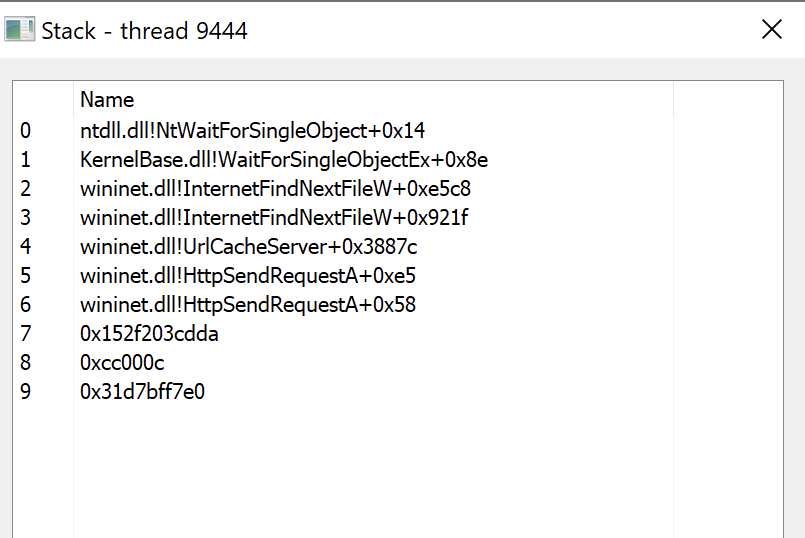
Default beacon thread call stack.
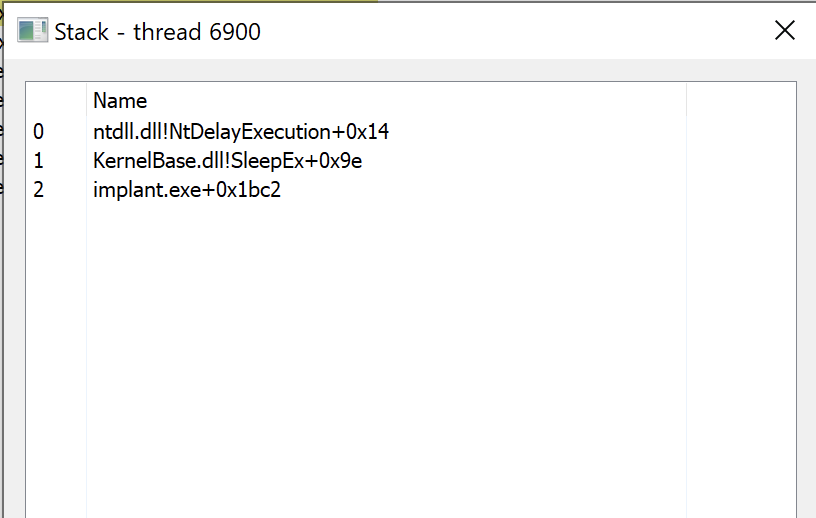
Spoofed beacon thread call stack.
10. In-memory encryption of beacon
The other evasion for in-memory detection is to encrypt the implant’s executable memory regions while sleeping. Using the same sleep hook as described in the section above, we can obtain the shellcode memory segment by examining the caller address (the beacon code that calls Sleep() and therefore our MySleep() hook).
If the caller memory region is MEM_PRIVATE and EXECUTABLE and roughly the size of our shellcode, then the memory segment is encrypted with a XOR function and Sleep() is called. Then Sleep() returns, it decrypts the memory segment and returns to it.
Another technique is to register a Vectored Exception Handler (VEH) that handles NO_ACCESS violation exceptions, decrypts the memory segments and changes the permissions to RX. Then just before sleeping, mark the memory segments as NO_ACCESS, so that when Sleep() returns, it throws a memory access violation exception.
Because we registered a VEH, the exception is handled within that thread context and can be resumed at the exact same location the exception was thrown. The VEH can simply decrypt and change the permissions back to RX and the implant can continue execution. This technique prevents a detectible Sleep() hook being in place when the implant is sleeping.
Mariusz Banach has also implemented this technique in ShellcodeFluctuation.
11. A custom reflective loader
The beacon shellcode that we execute in this loader ultimately is a DLL that needs to be executed in memory. Many C2 frameworks leverage Stephen Fewer’s ReflectiveLoader. There are many well written explanations of how exactly a relfective DLL loader works, and Stephen Fewer’s code is also well documented, but in short a Reflective Loader does the following:
- Resolve addresses to necessary
kernel32.dll WINAPIs required for loading the DLL (e.g. VirtualAlloc, LoadLibraryA etc.)
- Write the DLL and its sections to memory
- Build up the DLL import table, so the DLL can call
ntdll.dll and kernel32.dll WINAPIs
- Load any additional library’s and resolve their respective imported function addresses
- Call the DLL entrypoint
Cobalt Strike added support for a custom way for reflectively loading a DLL in memory that allows a red team operator to customize the way a beacon DLL gets loaded and add evasion techniques. Bobby Cooke and Santiago P built a stealthy loader (BokuLoader) using Cobalt Strike’s UDRL which I’ve used in my loader. BokuLoader implements several evasion techniques:
- Limit calls to
GetProcAddress() (commonly EDR hooked WINAPI call to resolve a function address, as we do in section 4)
- AMSI & ETW bypasses
- Use only direct system calls
- Use only
RW or RX, and no RWX (EXECUTE_READWRITE) permissions
- Removes beacon DLL headers from memory
Make sure to uncomment the two defines to leverage direct system calls via HellsGate & HalosGate and bypass ETW and AMSI (not really necessary, as we’ve already disabled ETW and are not injecting the loader into another process).
12. OpSec configurations in your Malleable profile
In your Malleable C2 profile, make sure the following options are configured, which limit the use of RWX marked memory (suspicious and easily detected) and clean up the shellcode after beacon has started.
set startrwx "false";
set userwx "false";
set cleanup "true";
set stomppe "true";
set obfuscate "true";
set sleep_mask "true";
set smartinject "true";
Conclusions
Combining these techniques allow you to bypass (among others) Microsoft Defender for Endpoint and CrowdStrike Falcon with 0 detections (tested mid April 2022), which together with SentinelOne lead the endpoint protection industry.
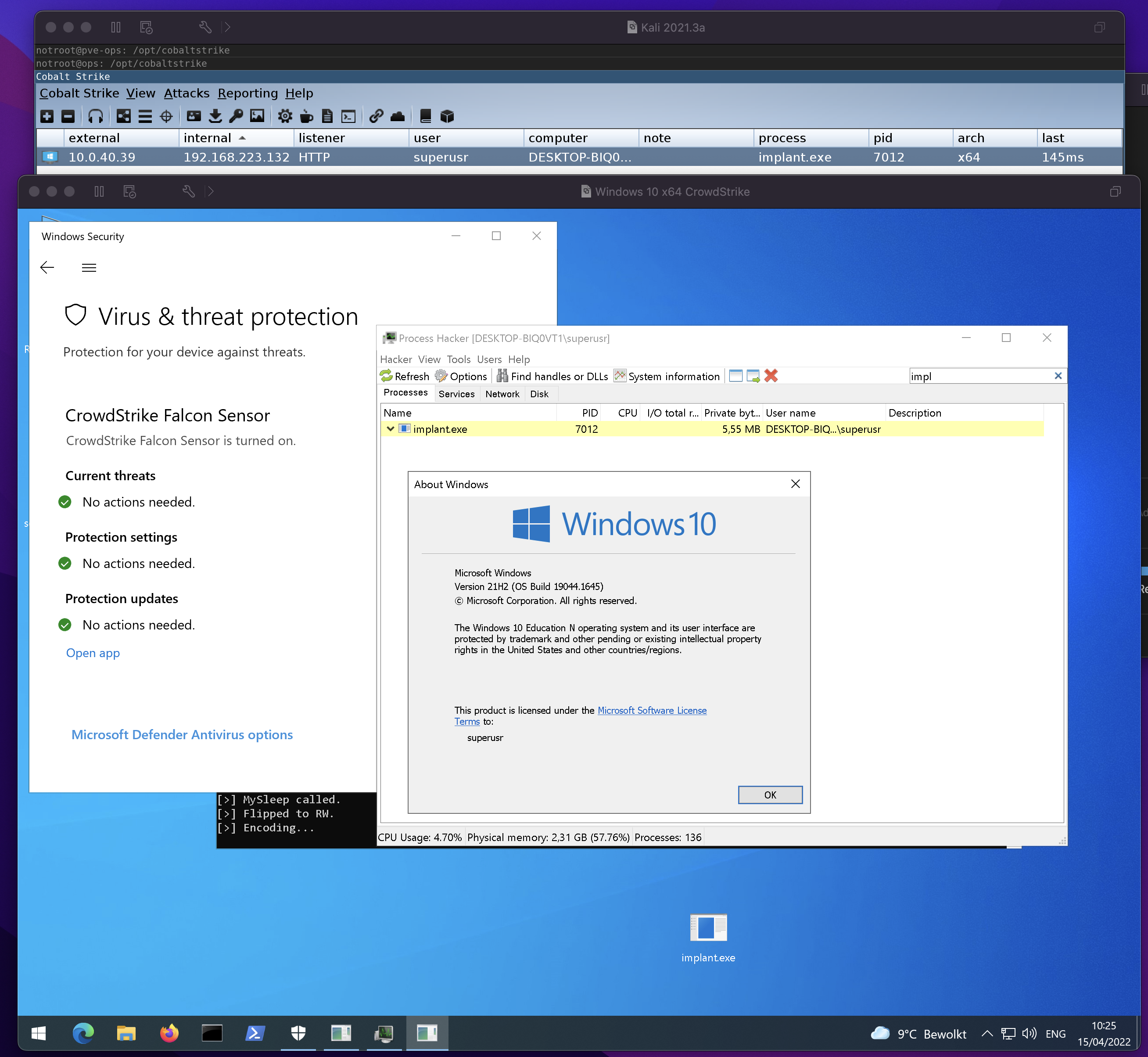
CrowdStrike Falcon with 0 alerts.
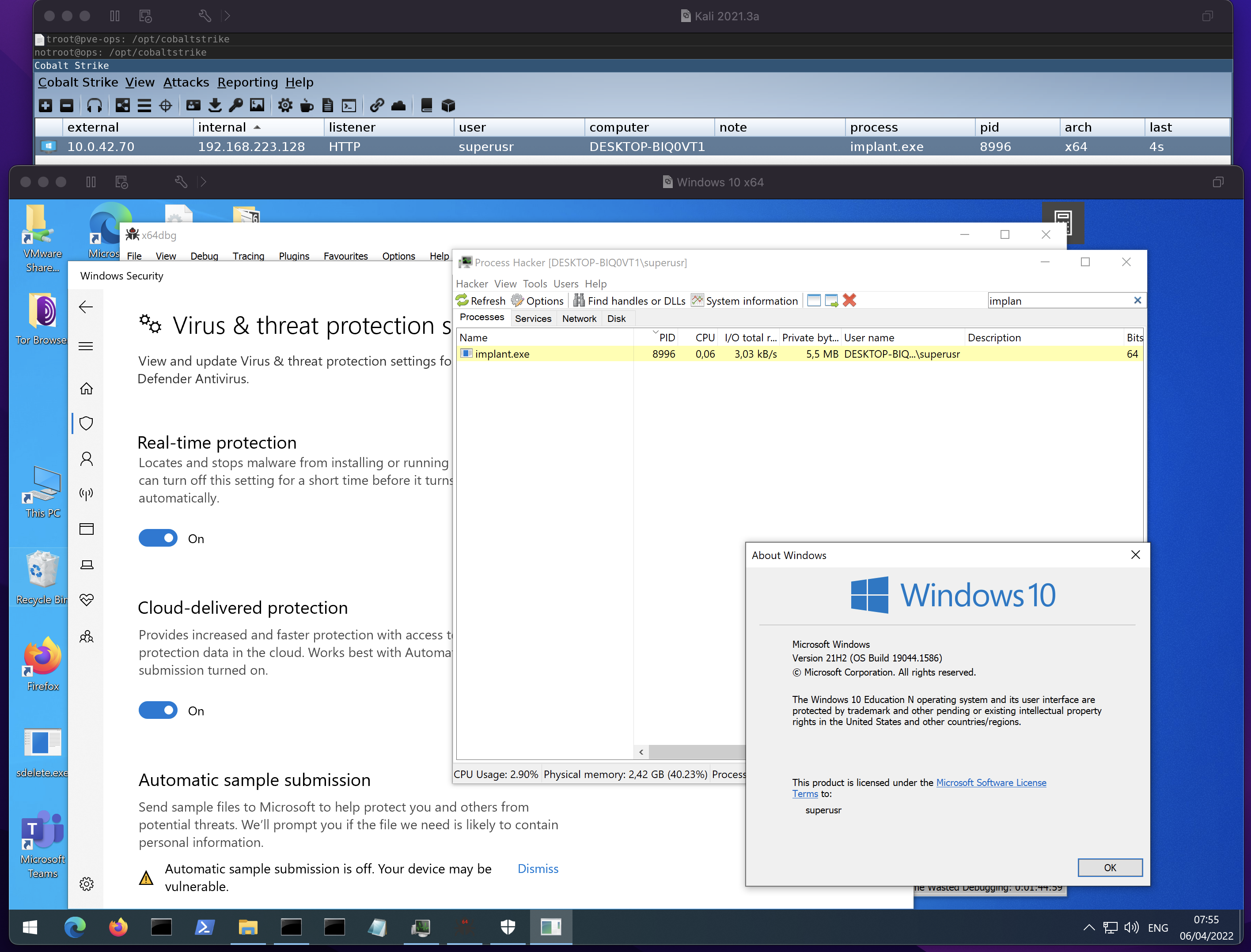
Windows Defender (and also Microsoft Defender for Endpoint, not screenshotted) with 0 alerts.
Of course this is just one and the first step in fully compromising an endpoint, and this doesn’t mean “game over” for the EDR solution. Depending on what post-exploitation activity/modules the red team operator choses next, it can still be “game over” for the implant.
In general, either run BOFs, or tunnel post-ex tools through the implant’s SOCKS proxy feature. Also consider putting the EDR hooks patches back in place in our Sleep() hook to avoid detection of unhooking, as well as removing the ETW/AMSI patches.
It’s a cat and mouse game, and the cat is undoubtedly getting better.
Vincent Van Mieghem
Continue reading Evading industry leading endpoint protection in 2022





